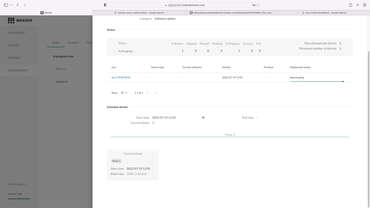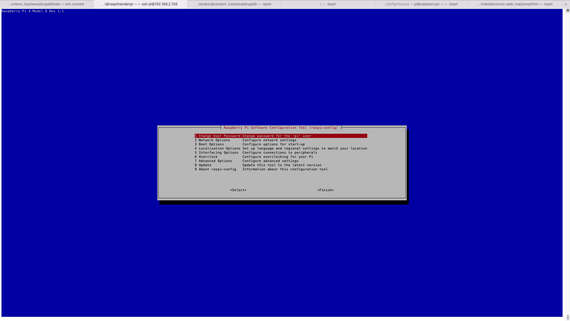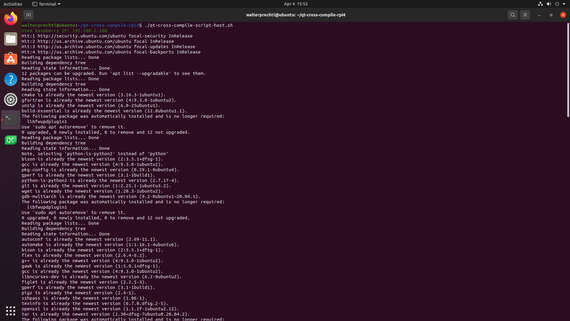
u-boot 설정 Mender
저희는 개발에 Yocto Kirkstone 브랜치를 사용하고 있습니다. VisionFive - Mender - Yocto - 파트 1 및 VisionFive - Mender - Yocto - 파트 2에서 설명한 대로 이미 작업 개발 환경을 설치하고 환경을 설정했다고 가정합니다.
u-boot VisionFive 보드
VisionFive RISC-V SBC는 2개의 부트로더(secondBoot 및 u-boot)를 사용합니다. 메커니즘은 VisionFive SBC 빠른 시작 가이드에 설명되어 있습니다.
이러한 요구 사항을 처리한다는 것은 다음을 의미합니다.
- https://github.com/starfive-tech/u-boot에서 u-boot를 mender용 설정으로 패치해야 합니다
- yocto로 u-boot를 비트베이크해야 합니다
- 2단계 부트로더로 업로드하려면 u-boot를 수동으로 컴파일해야 합니다
u-boot 패치
먼저, starfive-tech의 u-boot 파생 항목을 복제하여 사용할 코드 기반을 얻습니다.
git clone -b JH7100_upstream https://github.com/starfive-tech/u-boot.gitMender 자동 구성 패치
Yocto의 meta-mender-core는 'MENDER_UBOOT_AUTO_CONFIGURE = "1"'이 설정된 경우 Mender 니즈에 따라 자동으로 u-boot 패치를 시도합니다. 대부분의 경우, 이 시나리오는 보드 제조업체의 조정으로 인해 작동하지 않습니다.
그러나 Mender의 자동 구성 패치는 Mender 클라이언트를 사용하여 VisionFive SOC에 대한 u-boot를 조정하기 시작하는 데 사용하기에 좋습니다.
자동 구성 패치를 얻으려면 MENDER_UBOOT_AUTO_CONFIGURE = "1" 설정으로 u-boot를 비트베이크해야 합니다:
bitbake u-boot-visionfive'your-build-directory/tmp/work/starfive_visionfive_jh7100-poky-linux/u-boot-visionfive/1_v2022.03-r0' 디렉토리에 'mender_auto_configured.patch'라는 패치 파일이 생성됩니다.
복제된 u-boot에 패치 적용
그 다음, starfive-tech에서 복제된 u-boot 저장소에 이 mender_auto_configured.patch를 적용합니다.
cd u-boot-starfive
git apply path-to-patch/mender_auto_configured.patchu-boot-starfive 사용자 정의
u-boot의 경우, Mender 서버에 아티팩트를 배포한 후 SOC가 부팅해야 하는 올바른 정보를 얻기 위해 Mender 변수를 알아야 합니다.
따라서 'u-boot-starfive/include/configs/starfive-jh7100.h' 파일을 사용자 정의하여 Mender 변수를 가져오고 부팅할 파티션을 관리해야 합니다:
#define STARLIGHT_FEDORA_BOOTENV \
"bootdir=/boot\0" \
"bootenv2=uEnv.txt\0" \
"bootenv3=uEnv3.txt\0" \
"mmcdev=0\0" \
"mmcpart=2\0"
#define CONFIG_EXTRA_ENV_SETTINGS \
MENDER_ENV_SETTINGS \
STARLIGHT_FEDORA_BOOTENV \
"loadaddr=0xa0000000\0" \
"loadbootenv=fatload ${mender_uboot_boot} ${loadaddr} ${bootenv}\0" \
"ext4bootenv2=ext4load ${mender_uboot_root} ${loadaddr} ${bootdir}/${bootenv2}\0" \
"ext4bootenv3=ext4load ${mender_uboot_root} ${loadaddr} ${bootdir}/${bootenv3}\0" \
"importbootenv=echo Importing environment from mmc mender_uboot_dev ${mender_uboot_boot} ...; " \
"env import -t ${loadaddr} ${filesize}\0" \
"mmcbootenv=run mender_setup; " \
"echo mender_kernel_root_name ${mender_kernel_root_name} ...; " \
"echo mender_boot_part_name ${mender_boot_part_name} ...; " \
"setenv bootpart ${mender_uboot_root}; " \
"mmc dev ${mender_uboot_dev}; " \
"if mmc rescan; then " \
"run loadbootenv && run importbootenv; " \
"if test ${mender_kernel_root_name} = /dev/mmcblk0p2; then " \
"run ext4bootenv2 && run importbootenv; " \
"fi; " \
"if test ${mender_kernel_root_name} = /dev/mmcblk0p3; then " \
"run ext4bootenv3 && run importbootenv; " \
"fi; " \
"if test -n $uenvcmd; then " \
"echo Running uenvcmd ...; " \
"run uenvcmd; " \
"fi; " \
"fi\0" \
"fdtfile=" CONFIG_DEFAULT_FDT_FILE "\0" \
BOOTENV \
BOOTENV_SF테스트 '${mender_kernel_root_name}'이 중요하며, 그 다음, 커널을 로드하기 위해 어떤 uEnv 파일을 사용할지 결정합니다.
그 다음, Yocto에서 사용하기 위해 u-boot에서 완전한 패치를 생성합니다:
git diff --patch > ~/Documents/Yocto/meta-interelectronix-visionfive/recipes-bsp/u-boot/files/0004-u-boot.patch이 패치를 Yocto의 'u-boot-visionfive_%.bbappend'에 포함합니다:
FILESEXTRAPATHS:prepend := "${THISDIR}/files:"
SRC_URI:append = " \
file://0004-u-boot.patch \
"u-boot 비트베이크
'u-boot-visionfive_%.bbappend'에서 MENDER_UBOOT_AUTO_CONFIGURE = "1"을 MENDER_UBOOT_AUTO_CONFIGURE = "0"으로 변경합니다.
이제 Mender의 자동 구성 기능 없이 사용자 정의 패치를 사용하여 u-boot를 비트베이크할 수 있습니다:
bitbake u-boot-visionfive2단계 부트로더로 업로드용 u-boot 컴파일
이제 'bitbakeu-boot-vision 5'로 추가된 패치를 포함하는 'VisionFive-build/tmp/work/starfive_vision five_jh7100-poky-linux/u-boot-vision five/1_v2022.03-r0/git' 디렉토리에서 u-boot을 컴파일할 수 있습니다.
- VisionFive SOC용 u-boot를 컴파일하는 방법은 u-boot 및 커널 컴파일에 설명되어 있습니다
- VisionFive SOC용 u-boot를 업로드하는 방법은 부록 B: 펌웨어 및 u-boot 업데이트에 설명되어 있습니다
Yocto Linux 비트베이크
Mender 클라이언트가 포함된 Yocto Linux 비트베이크:
bitbake vision-five-image-menderLinux 이미지를 SD 카드에 플래시하고 VisionFive SOC를 부팅합니다. 모든 것이 제대로 작동하면 장치가 Mender 서버 GUI에서 보류 중인 장치로 나타납니다.
'DEVICES'에서 이를 수락하고 포함하여 이 장치에 대한 이후 소프트웨어 업데이트 배포를 관리할 수 있습니다.
Mender용 아티팩트를 생성하는 방법은 VisionFive - Mender - Yocto - 파트 4를 참조하세요.
저작권 라이선스
Copyright © 2022 Interelectronix e.K.
이 프로젝트 소스 코드는 GPL-3.0 라이선스에 따라 라이선스가 부여됩니다.

시리즈의 글 중 파트 1에서는 Mender 클라이언트를 통합한 Yocto Linux를 생성하기 위해 Yocto 환경을 설정하는 방법에 대해 설명합니다.

시리즈의 글 중 파트 2에서는 Mender 클라이언트를 통합한 Yocto Linux를 생성하기 위해 Yocto 환경을 설정하는 방법에 대해 설명합니다.

시리즈의 글 중 파트 4에서는 Mender 클라이언트를 통합한 Yocto Linux를 생성하기 위해 Yocto 환경을 설정하는 방법에 대해 설명합니다.

